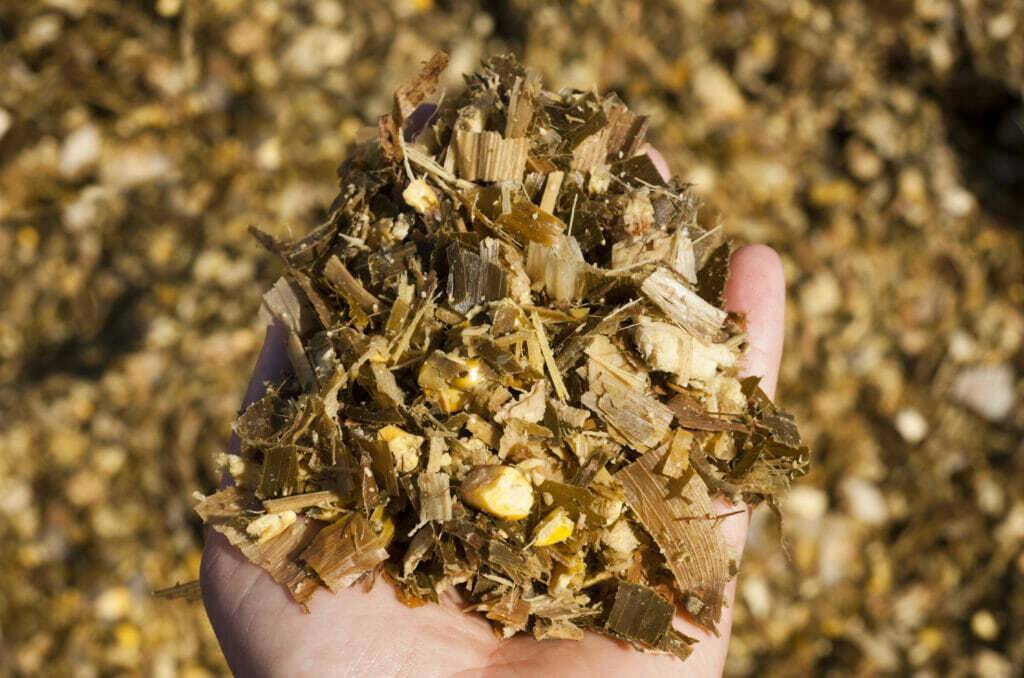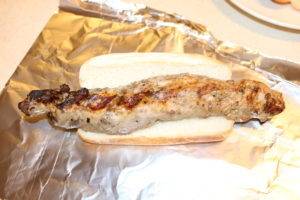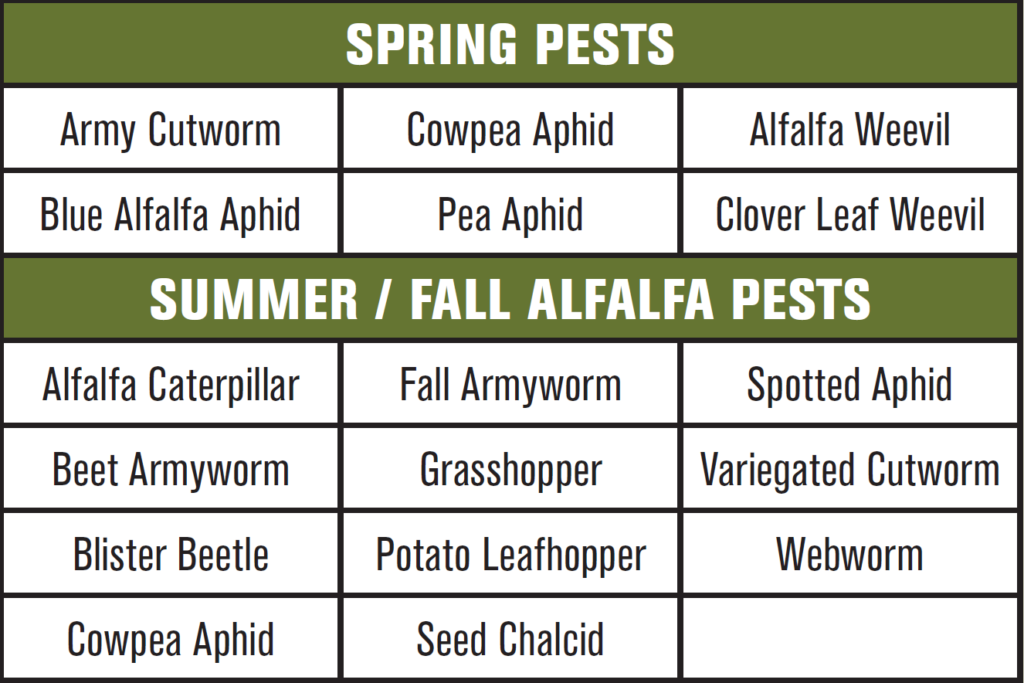As the calendar moves closer to harvest, many farmers are looking to gauge yield expectations in soybean fields. In this week’s segment, Precision Agronomist Phil Long explains the correlation between node count, spacing, population and yield.
-
Latham Hi‑Tech Seeds
#AskTheAgronomist: High-Yield Soybeans and Node Count

-
Latham Hi‑Tech Seeds
6 Tips for Harvesting Corn Silage in Drought Conditions
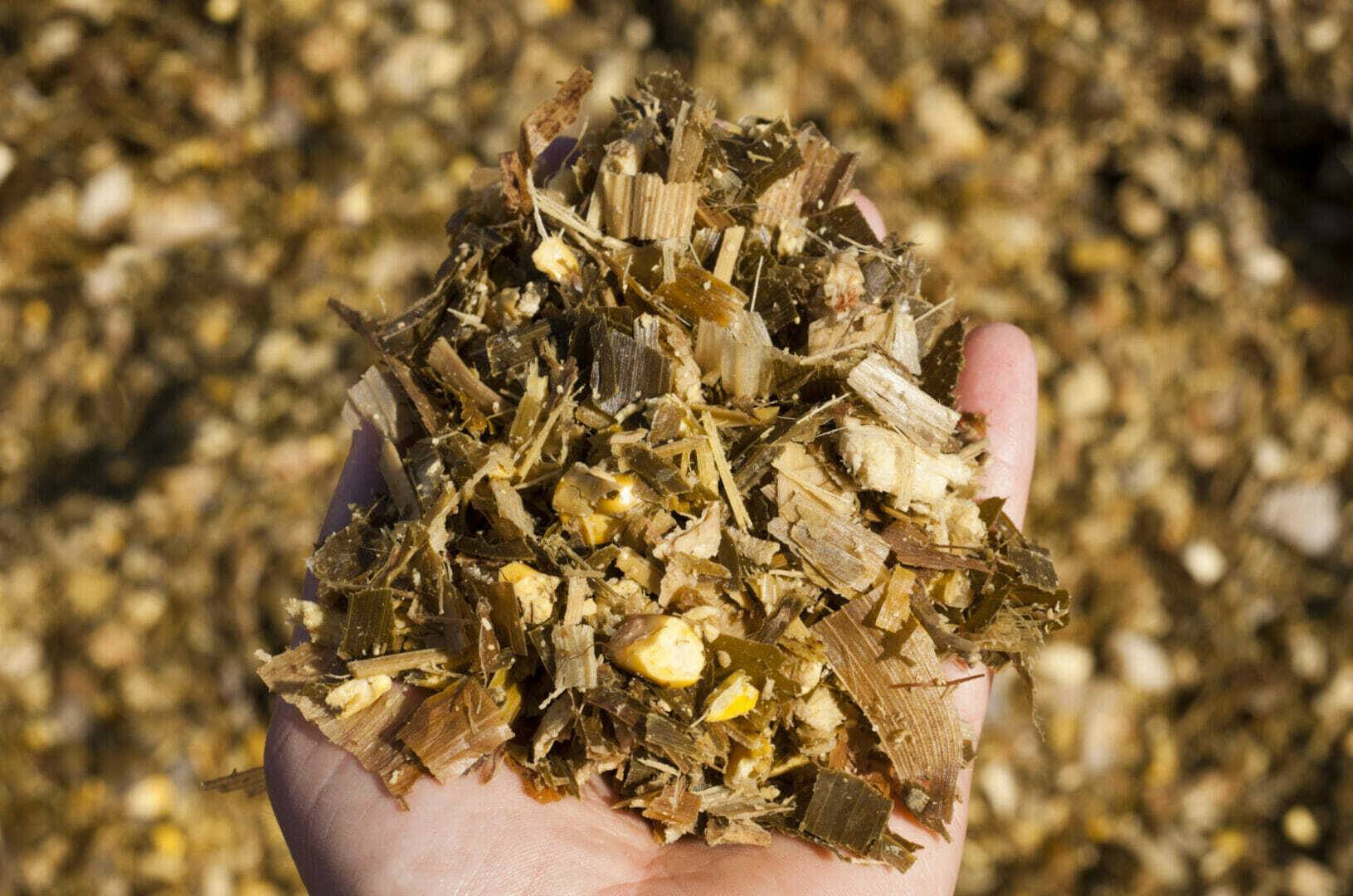
Drought-stressed corn can create a range of silage harvest issues. With much of Latham Country experiencing abnormal to extreme drought conditions, risks such as high nitrate levels, variable moisture content and potential for yeasts, molds and mycotoxins must be accounted for and well understood.
Taking extra precautions to ensure a safe and productive corn silage harvest is a worthy investment. Here are a few key considerations to keep in mind this summer and fall.
- Consult your team. Before you make any corn silage harvest decisions, verify your plan doesn’t impact your insurance coverage. It’s also good to discuss feed-out plans with an animal nutritionist so you have a plan for when and how the forage will be used.
- Test chopping height. As you prepare to harvest silage, test various chopping heights for nitrates. Nitrate concentration tends to lessen as chopping height increases. Measure your chopping height and then send a 5-inch stalk sample to the lab. It is best to send at least two samples. By testing different heights across the plant, it gives you a general idea of nitrate hot zones. Also, remember that recent rains can increase nitrate levels.If you harvest high on the stalk to avoid high nitrate levels, your tonnage will be reduced. It is estimated that you harvest 1 ton per foot of no ear or poorly eared corn.
- Monitor moisture content. As fields vary, so too will harvest moisture. Ideally, you want to get to 65% whole plant moisture. If it is drier, packing can be difficult but mixing in small particles can help if needed.
- Test on harvest day. Testing nitrate levels on harvest day will give you a good frame of reference for the final product. If it shows high, do not feed it to pregnant animals, and consult with your nutritionist regarding feeding to it the rest of your livestock. Allow this crop to ensile at least 21 days, and then retest.
- Innoculate. Anything to help ensile and preserve the forage after chopping is important. Because drought-stressed corn can be so variable in content, moisture and packing densities, it can lead to potential issues with high nitrates, mold, yeasts and mycotoxins. A good inoculant can help the fermentation process and reduce any further problems during feed out.
- Test before you feed. Ensiling can help reduce nitrate levels by as much as 40-60%, but the final nitrate levels can be dependent on good packing. It is always best to test before you feed silage to livestock. As a rule of thumb, take at least two samples from different areas of the silage pack. One sample is just a number, two samples start the trend and three samples add confidence. There is just too much at stake to risk nitrate poisoning.
While Mother Nature can certainly throw some unexpected curve balls our way, these tips can help you make the best of a not-so-ideal harvest scenario.
-
Latham Hi‑Tech Seeds
The Iowa State Fair Returns

By Aaron Putze
Absence makes the heart grow fonder.
This often-cited comment isn’t just a favored figure of speech. A 2013 published study proved that people involved in long-distance relationships had more meaningful interactions than those who saw each other daily.
While I prefer seeing those I love frequently, perhaps the adage best applies to Iowans’ love affair with the Iowa State Fair.

Sunset at the iconic Iowa State Fair After its absence last year, one of our nation’s most iconic events returns Aug 12-22.
Call it a hunch, but my gut tells me the crowds will be enormous.
This will be my 25th fair in 26 years. After teetering on state fair burnout at the close of the 2019 edition, I’m ready and waiting for the gates to open and the canon sound 9 a.m. Thursday, Aug. 12.

America Needs Farmers artwork at the Iowa State Fair Once again, I’m relishing thoughts of riding the sky glide, walking the cattle barn, navigating the Grand Concourse, sampling corn dogs, hot beef sundaes, and deep fried deviled eggs (check out the latter at the Cluck ‘n Coop tucked just inside the Midway operated by my friend Shon Bruellman).
I’m also looking forward to advocating once again for farmers during the 11-day event. The number of state fair visitors routinely tops one million. Most who walk the grounds have little to no connection to agriculture.
The Iowa Food & Family Project (Iowa FFP) returns to the southeast atrium of the Varied Industries Building. It’s our 10th year in the location. Given roughly 250,000 fairgoers pass through the atrium annually, simple math tells me we’ve rubbed elbows with almost 2.5 million people.
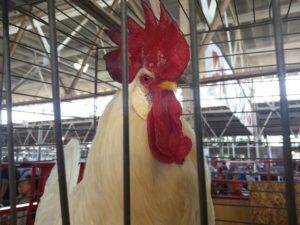
Rooster at the Iowa State Fair The impact has been measurable. Each fair, we add thousands of new fans to Iowa FFP’s audience. In addition to having an appetite for state fair cuisine, they hunger for candid and accurate information about the food they eat, how it’s grown and who grows it. The Iowa FFP is an open book about food, family and farming. We welcome the interest people have in all things food-related, from the simple (no, chocolate milk doesn’t come from brown cows!) to the complicated (yes, genetic modification is a good thing).
Those who sign up to engage with Iowa FFP receive farm-fresh information about modern agriculture via a
combination of our e-newsletter, popular Fresh Pickings Magazine (published quarterly) and social media offerings. Not only does the audience stick, but surveys show that those engaged with the Iowa FFP are 6% more trusting of modern agriculture than the general public.

Aaron Putze, APR, serves as the Sr. Dir., Information and Education for the Iowa Soybean Association. He was raised on a farm near West Bend and lives in Waukee with his wife Crystal and children Garrett, Grant and Jaelyn. Given it’s our 10th fair, we’re going back to how it all began. In August 2010, our first exhibit featured numerous ag-centric creations made entirely out of canned and packaged food items. In 2021, we’re constructing a larger-than-life tribute to Iowa farmers. It will again be built entirely of canned and packaged food. While I’m not about to spill the beans on what we’ll be constructing, rest assured that you’ll leave the exhibit knowing that our food, land and future is in good hands because of the dedication of Iowa’s farm families.
But that’s not the only place the Iowa Soybean Association (ISA) will have a presence. In addition to joining with Iowa’s commodity organizations to bring the Iowa FFP exhibit to life, biodiesel made from soybeans will power the state fair trams. Children participating in the super-popular Little Hands on the Farm will learn how soybeans are grown while visitors to the Ag Building will have the opportunity to visit with soybean farmers on select days. ISA is also helping support the volunteers who will be caring for the pigs, poults and turkeys fairgoers will ooh and awe at in the Animal Learning Center.
Absence might make the heart grow fonder but coming together is the best way to connect people who don’t farm with those who do.
And, so it will be again this year at the Iowa State Fair. I for one can’t wait.
-
Latham Hi‑Tech Seeds
#AskTheAgronomist: Which Yield Factor is Most Important?

Which yield factor has the most bearing on final yield: kernel round, ear length or test weight? Precision Agronomist Phil Long and Intern Kirsten Suntken do the math in this segment of #AskTheAgronomist.
-
Latham Hi‑Tech Seeds
Turkey Producers Serve Up Tasty State Fair Traditions

“Fun, delicious, unique and healthy” aren’t usually the words fairgoers associate with food on a stick, but that’s exactly what Iowa’s turkey producers serve up at the “Turkey Grill.” You can get a taste of it at the 2021 Iowa State Fair (ISF) from Thursday, August 12, through Sunday, August 22, 2022.
“The Turkey Grill started with the goal to promote turkey and to provide a healthy, delicious alternative for fair-goers, and it continues to do so today, 38 years later,” says Gretta Irwin, Executive Director & Home Economist for the Iowa Turkey Federation / Iowa Turkey Marketing Council.

The Turkey Grill is located east of the Varied Industries Building on the Iowa State Fairgrounds. To learn more about the fair or to get answers to frequently asked questions, visit IowaStateFair.org. There’s also an official Iowa State Fair app.
We strive to serve fun, delicious, unique and HEALTHY turkey items.
NEW! Breakfast Poppers

The Turkey Grill’s new Breakfast Poppers. - $2
- Breakfast in a meatball! Turkey, scrambled eggs, cheddar cheese, onion, green pepper, red peppers.
- 5 meatballs per serving
- Guests can put their favorite condiment (ketchup, salsa, hot sauce) with the meatballs.
Turkey Tenderloin
- $7
- Marinated breast meat and slow grilled (recipe below)
- On the Iowa State Fair “Healthy Choices” list
- 166 calories, 25 grams of protein and only 1 gram of saturated fat
- We will serve it in a bun or on a stick
- No allergens. Marinated in lemon juice, soy sauce alternative so gluten free, vegetable oil, red wine, onion, ginger, pepper and garlic powder
Not Your Momma’s Taco
- $6
- Deep-fried flour tortilla, Mexican-seasoned shredded turkey, homemade veggie slaw, mango salsa
- On the Iowa State Fair “Healthy Choices” list
- The meat is made exclusively for us by West Liberty Foods, the same turkey is featured on our shredded turkey sandwich, without the Mexican seasoning
- People’s Choice Best New Fair Food of 2016
- Sold almost 17,000 turkey tacos at the 2016 Iowa State Fair
Pulled Turkey Sandwich
- $6
- Shredded Turkey Sandwich (all white meat)
- Will remind you of that perfect turkey sandwich the day after Thanksgiving
- 120 calories, 1-gram saturated fat and 26 grams protein
- No allergens. Ingredients: Breast meat, natural turkey broth, salt, sodium phosphate and natural flavorings.
Turkey Drumstick
- $10
- Brined, smoked and slow grilled to perfection
- Only 140 calories per 3 ounce serving and 1 gram of saturated fat, this perfect-to-share fair item since it is about 16 ounces of meat.
- No allergens, no wheat gluten or milk products, gluten free
Griddle Sticks
- $2
- pancake batter covering a turkey sausage on a stick, served in a tray with syrup
- 160 calories, 1.5 grams of saturated fat and 7 grams of protein
- Contains egg, milk, soy and wheat
“We hope that our guests enjoy this powerful protein year-round!” adds Irwin.
To help encourage you to eat turkey year-round, below are links to a few of our favorite blog posts about Iowa turkey producers with links to turkey recipes:
- Talk Turkey with Iowa Farm Tim Graber
- Life Has Been a Series of Opportunities for This Turkey Farmer
- Meet the Farmers Behind Your Thanksgiving Turkey
How delicious does Lemon Garlic Rotini with Zucchini sound? This recipe, which features a pound of turkey breast meat, is included in a link within a blog post above. Because it’s zucchini season, I wanted to be sure you check it out.
The Iowa Turkey Federation also is sharing its recipe for Grilled Turkey Tenderloin Marinade. Trust me, it’s incredibly delicious. Better yet, try it yourself!
-
Latham Hi‑Tech Seeds
#AskTheAgronomist: Corn Rootworm Pressure Now and Into the Future

Corn rootworm pressure has been steadily increasing over the past few years across the Midwest. Precision Agronomy Advisor Phil Long discusses how to identify and gauge pest pressure in your fields and plan for the future.
-
Latham Hi‑Tech Seeds
#AskTheAgronomist: Soybean Cupping and Recovery

Each year, many farmers observe cupping in soybeans for a variety of reasons ranging from herbicide drift to environmental factors. Precision Agronomist Phil Long covers how to stage damage and evaluate recovery potential.
-
Latham Hi‑Tech Seeds
Scout Alfalfa for These Damaging Pests
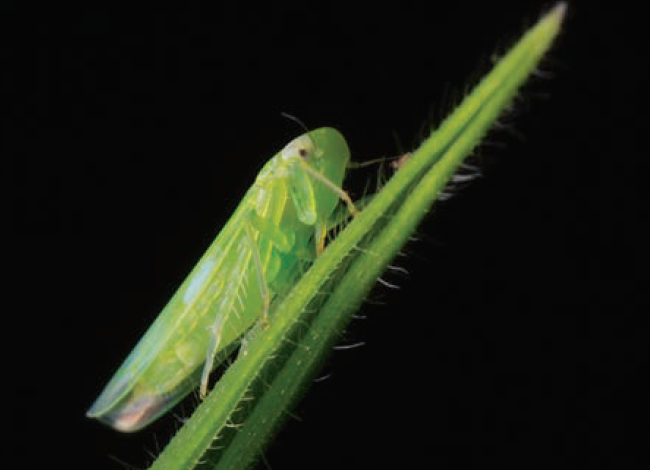
As with all crops, scouting alfalfa acres is key to controlling pests. Each pest has a different life cycle based on different variables, such as heat and moisture. While weather plays a key role, there are still cyclical patterns in which pests are more common. Below is a chart showing the most damaging pests to scout for according to season.
Potato Leafhopper and Pea Aphids are the two pests that cause the most damage annually across Latham Country. Many farmers question how to judge when spraying an insecticide is a wise choice. Below are some tips to help you scout fields and arrive at a decision.
- WHAT TO LOOK FOR. Scouting should begin five to seven days after the first cutting is taken and should continue weekly or bi-weekly if population counts reach close to threshold on a particular day. When scouting for Potato Leafhoppers, look for stunted plants, yellowing leaves in a v-shaped pattern beginning at the leaf tip, as well as “hopperburn,” or a red edge found on the leaf. This red burn can be easily confused for Boron deficiency. Pea Aphids will cause plants to lose their green color and wilt.
- HOW TO TAKE SWEEP SAMPLES. The easiest way to scout for these insects is to use a small sweep net. Walk a W-shaped pattern in the field, taking samples from five randomly selected areas. Leafhopper infestations generally begin on the edges of the field, so include these areas in your checks. Tips for Taking Sweep Samples:
- Swing the sweep net in a 180-degree arc, so the net rim strikes the top 6 to 8 inches of growth. Each 180-degree arc is one “sweep.”
- Take a sweep from right to left, walk a step, take another sweep from left to right, and so on.
- After taking five sweeps, quickly close the net and count the number of each insect.
- Divide this number by five to get the average for that area; record the average for each of the five areas in the field.
- THRESHOLDS AND TREATMENT. A plant’s immune system tends to handle more pressure as alfalfa matures, however, the harmful compounds that each insect species injects while feeding can reduce yields. When left unmanaged, severe cases can shorten the life cycle. Treatment for Potato Leafhoppers and Pea Aphids can follow these guidelines.

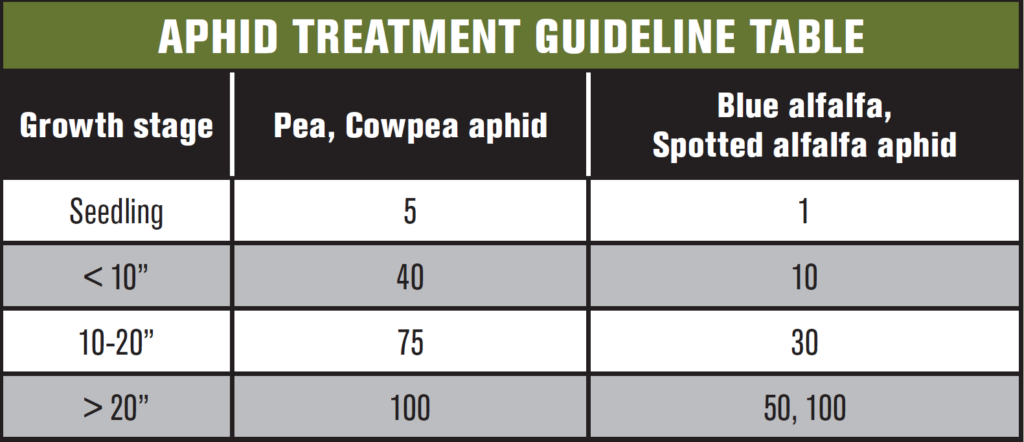
Early harvests often can be used to control both leafhoppers and aphids. Insecticides are a tool to help alter the life cycle of a pest and are especially helpful if thresholds are reached when alfalfa is small. Several insecticides are labeled for alfalfa with different classes and modes of action. Most have a harvest wait period depending on class and rate used. Be sure to follow the label guidelines closely. As with herbicides, alternating modes of action reduces the risk of resistant pests.
-
Latham Hi‑Tech Seeds
Finding the Right Products for Your Farm
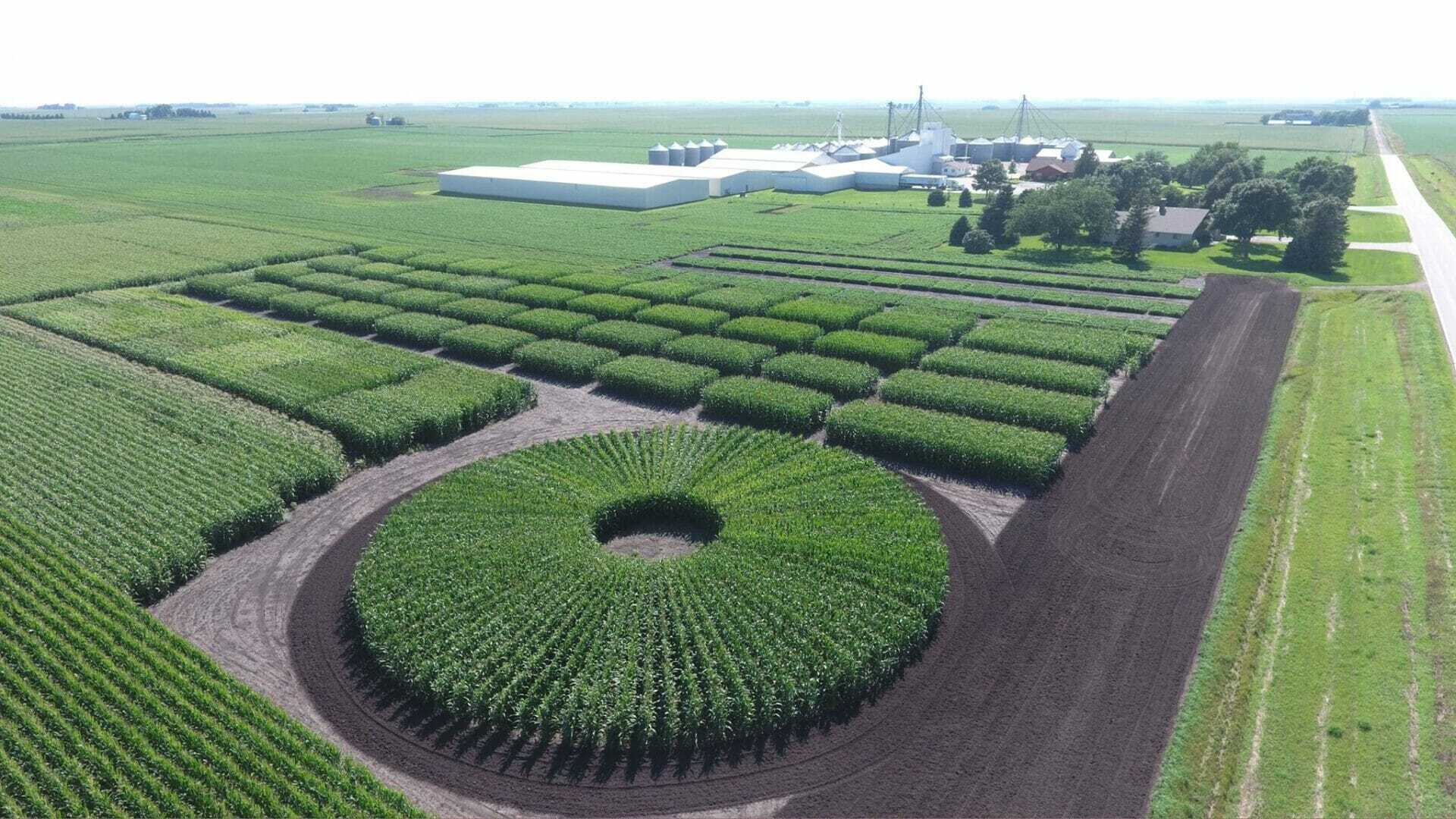
At Latham Hi‑Tech Seeds, we take pride in our ability to identify the best corn hybrids and soybean varieties to match our customers’ needs. We take time to listen to our sales team, which includes our dealers, talk about the needs of farmers across Latham Country. Their information about desired characteristics helps direct our research and testing efforts.
The journey to finding new products begins with our robust collaborative access to germplasm. Latham’s Product Team works in conjunction with many germplasm sources, including our own, to fuel our search to find the best products for the specific geographic regions we serve. We also have great relationships with trait providers to bring needed traits into our products. After we either find or create the desired genetic combinations, we move into the evaluation stage of our process.
Our Elite Trial program continues to grow with additional test locations across our sales footprint. We are testing in every corner of Latham Country. This means that we test products where they would be sold, which allows us to find unique niche products that excel in a local environment.
To help position products to fulfill our needs assessment, our regional sales managers (RSMs) get an early look at the products we’re considering for our lineup. Having “in-trial” conversations about products with our sales team is a tremendous benefit to Latham’s Product Teams. In addition, conversations about products in trials helps builds confidence with our sales team to position products. We have consolidated both our corn and soybean evaluation processes into one Elite Trial system, which allows our product teams to assess data more easily.
Once we identify products from the Elite Trials that meet Latham Hi‑Tech Seeds’ standards and fulfill our customers’ needs, we release them for sale. We also place these new products in our Latham Showcase plots, as well as in the independent F.I.R.S.T. Trials program, to once again showcase the performance of these new products and to provide opportunities for our customers to gain confidence in their performance.
Latham’s track record of performance in our Showcase plots and F.I.R.S.T. Trials proves the system we have built works! Our process of beginning with a large diverse pool of genetics; testing potential new products thoroughly in all parts of our footprint; and proving our performance in our final stages of Latham Showcase and F.I.R.S.T. Trial plots complete our journey in finding outstanding products.
I’m so excited about the products we’re testing this summer and look forward to talking about them in more detail at our upcoming field days. Watch your mail and social media for more details coming soon!
-
Latham Hi‑Tech Seeds
Get an “Early Look” at New Products

We have an exciting product lineup in store for 2022!
In September 2020, Bayer CropScience announced the approval of XtendFlex® soybeans for the 2021 growing season. Latham Hi‑Tech Seeds was prepared and launched seven new soybeans in this exciting new technology. We believe this new trait gives farmers an extra tool for battling the ever-increasing problem of herbicide-resistant weeds.
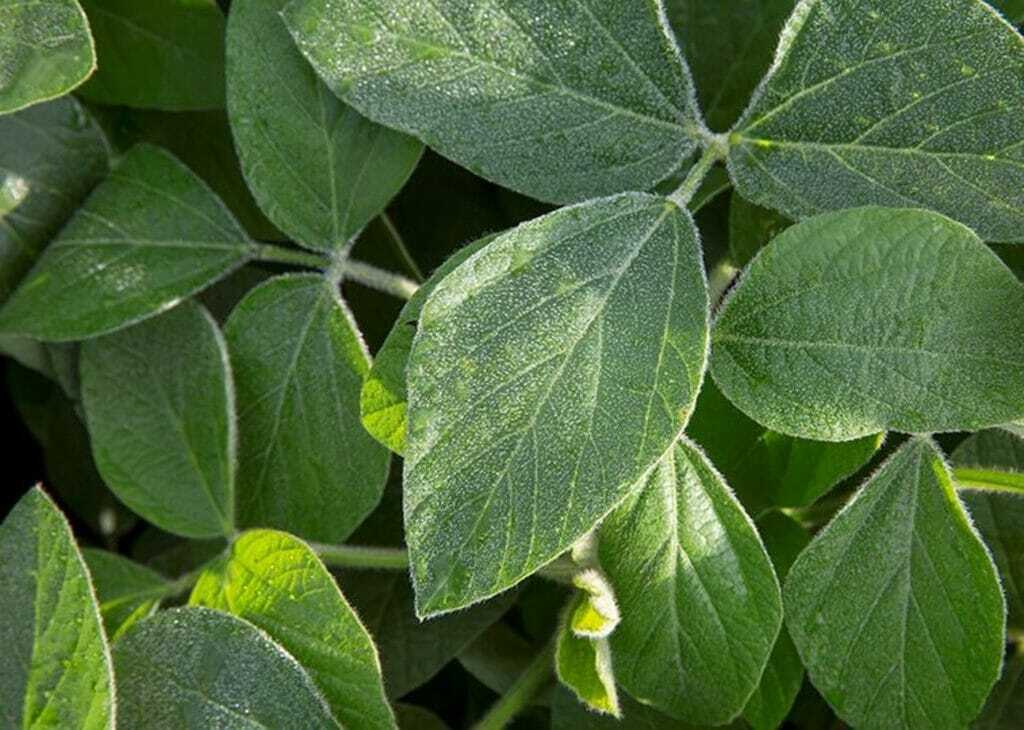
For the 2022 season, we are introducing these six new XtendFlex products:
- L 0254 XF – This 0.2 soybean carries the C-gene for Phytophthora, full resistance to Brown Stem Rot and excellent tolerance to Iron Chlorosis. Avoid SCN-infested fields.
- L 0984 XF – Featuring the Rps3-a gene for Phytophthora, this new 0.9 product also has strong tolerance to SCN, Brown Stem Rot, White Mold and Iron Chlorosis.
- L 1383 XF – This new Ironclad has L 0982 R2 as a parent! It has the Rps-3a gene, full resistance to Brown Stem Rot and good scores for White Mold, IDC, SCN and Stress.
- L 1784 XF – L 1858 R2 is a parent of this new 1.7 soybean! It features strong SCN, full resistance to Brown Stem Rot with very good scores for Iron Chlorosis and Stress.
- L 2786 XF – This new line has the Rps1-c gene for Phytophthora, full resistance to Brown Stem Rot and strong tolerance to SCN, White Mold, Iron Chlorosis and Stress.
- L 3086 XF – Replacing L 3058 XF, this SCN bean features the Rps1-c gene, full resistance to BSR and great tolerance to White Mold & Stress. It’s a fantastic Ironclad for no-till acres.
On the Enlist E3® side, we are adding four new soybeans:
- L 1219 E3 – This 1.2 bean carries the Rps1-c gene for Phytophthora and strong tolerance to SCN, SDS, Stress and Iron Chlorosis. It also has the Excluder gene for high-salt soils.
- L 1558 E3 – Here’s a 1.5 Ironclad that features the Rps3-a gene for Phytophthora, full resistance to BSR and great scores for SCN, Sudden Death, Iron Chlorosis and Stress.
- L 2458 E3 – This new E3 line has the Rps1-k gene, full resistance to BSR and strong scores for SCN, Sudden Death, Frogeye, Charcoal Rot, Stress and Iron Chlorosis.
- L 3479 E3 – Highlights of this new 3.4 bean K-gene for Phytophthora include complete BSR resistance, great SCN tolerance and strong scores for Sudden Death, IDC and Stress.
Our Product Development Teams have really done their homework for next year! Be sure to check out next month’s blog when we will highlight new corn products for 2022.
The legacy that we build our product decisions on is based on a foundation of quality and performance. We believe this foundation benefits Latham® dealers and their customers because we provide seed that is bred specifically for their geographies. Rest assured WHY we do what we do will never waiver!
